Trees...around Mario Prassinos
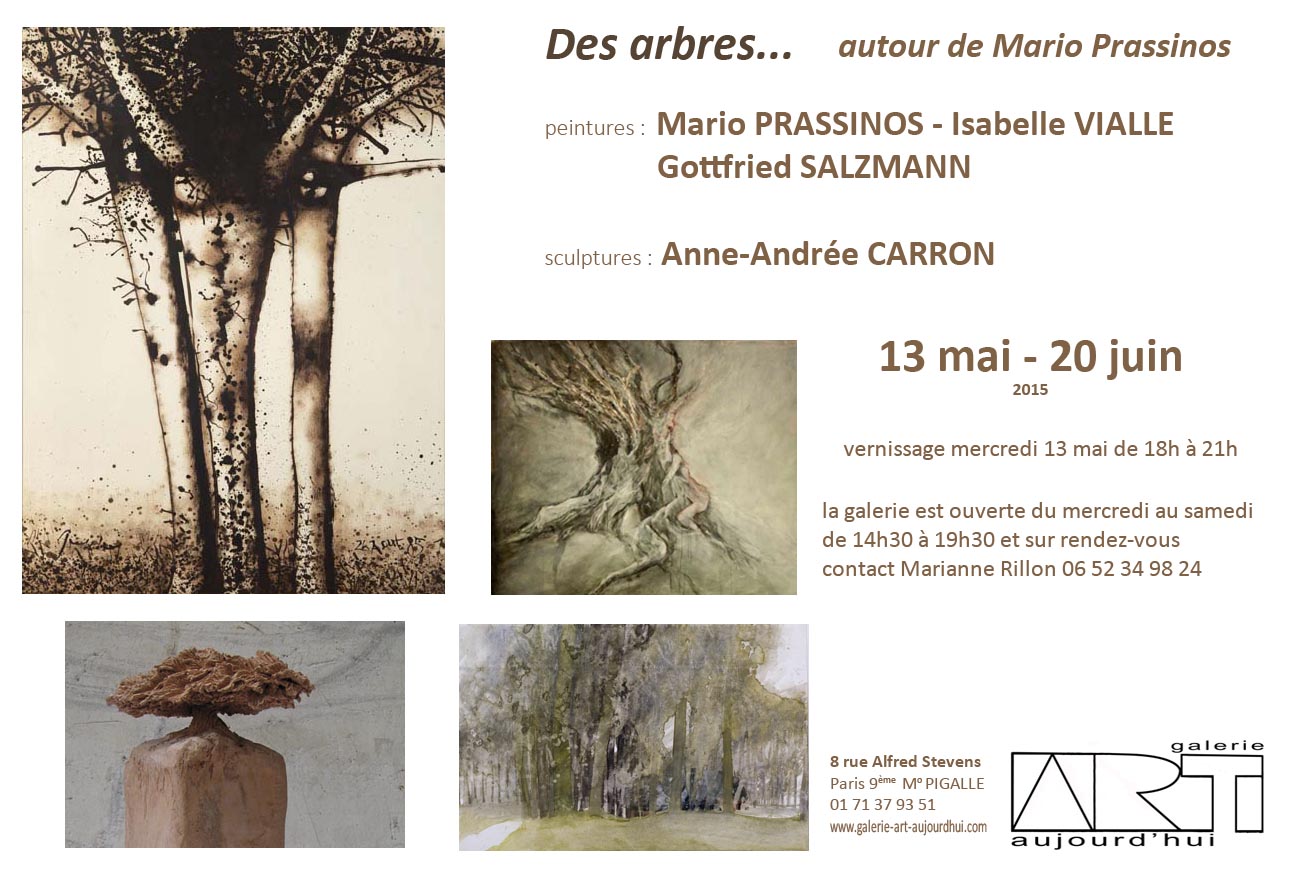
May 13 to June 20
Mario PRASSINOS, Isabelle VIALLE, Gottfried SALZMANN, paintings,
Anne-Andrée CARRON, sculptures
Tree of life, cosmic pillar, there are many myths and dreams around the tree, which inhabit human imagination since the dawn of time. Man has always perceived the tree as a vegetal brother. «Man, like tree, is a being in which confused forces come together in order to stand erect» (Gaston Bachelard «L’air et les songes»).
The more the tree rises toward the sky, the more its roots sink into the darkness of the earth. The tree goes between worlds, it is a link between the chthonic and the celestial world when its foliage blossoms back and forth within the rhythm of seasons. Its slow, silent and imperceptible growth, seems to be backed against eternity. The artists who we present, and first of all, Mario Prassinos, each in his own way, is part of this silent vitality.
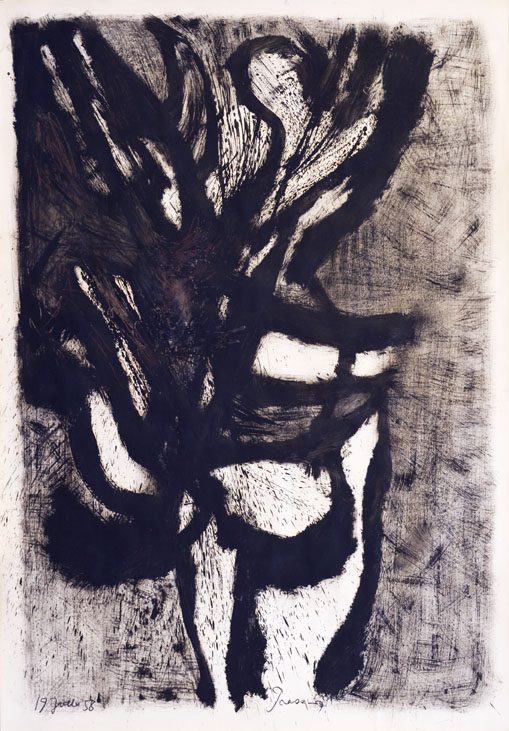
The tree is a theme that runs through Mario Prassinos’s work. The growth and energy of the vegetable kingdom can be inscribed with various forms and appearances, varying from human forms to the abstraction of signs. Any mutation seems possible.
Mario PRASSINOS
Mario Prassinos is one of the major artists of the second School of Paris after 1945. Born Greek, in 1916 in Istanbul, he died in 1985. He settled in 1951 in the Provençal village of Eygalieres situated in the Alpilles mountains. He became deeply rooted in this land of Provence, where the trees bend under the Mistral, like those of Greece bend under the Meltem, the violent wind that blows from the north-east on the Aegean Sea.
Among this protean work, sometimes on the limits of figuration and which has been universally recognized and celebrated during Prassinos’s lifetime, we decided to gather a few works representative of periods and series that revolve around the theme of the Tree:
— The Series called «Spetsai’s Cypresses» 1957-1959: oil paintings on paper, a concentrated power of energy, due to the gesture of inscribing wide black and tragic signs on the light of the white paper sheet.
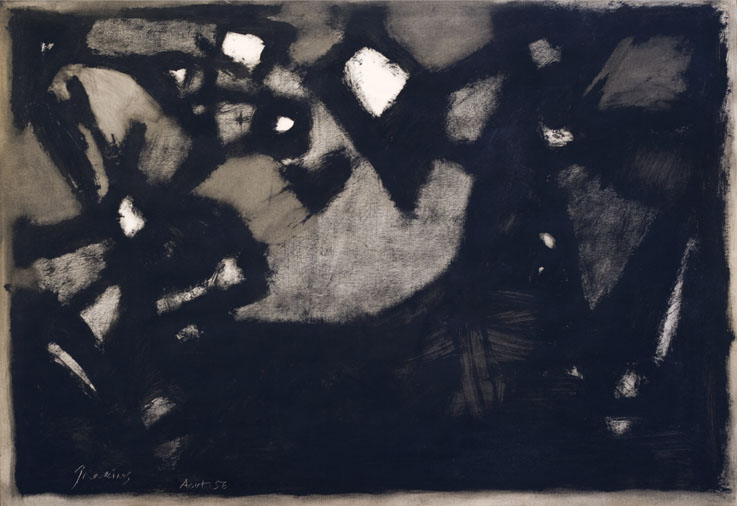
Alpilles: inks on paper painted facing the hill of Eygalières... here there are no trees, but only the writing of the hill, scrubland, signs and thorny bushes in the faults and folds of the white rock and limestone. The artist identifies himself with the «being-landscape» of the hill, and his motif is written as a forest of signs, spots and points of projected ink, necessarily «dripping», far from random gesture practiced by many other artists at this time...
— Trees, 1980-1985 and Paintings of Calvary,1985: These are the trees of memory, within their dehydrated foliages which have never blossomed again. (Gisèle Prassinos) In these oils on paper, Prassinos entangled the trees, as dreamed walkways, forests, deep forests out of time and impenetrable until this last serie, the «Paintings of Calvary», created the year of his death, and within which, one might see appearing the figure of the Passion, embodied in the tangle of branches and leaves scarcely mentioned but yet so present.
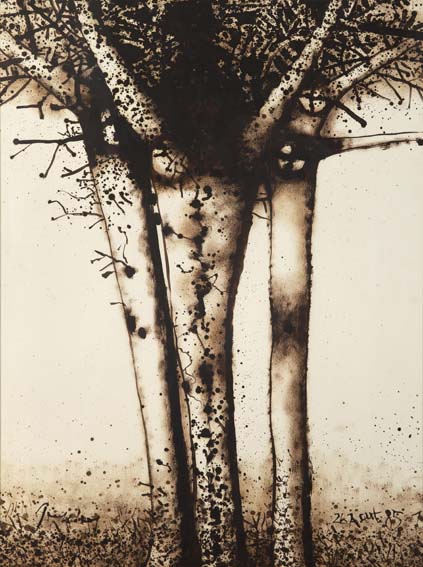
Isabelle VIALLE
The reconciliation of Isabelle Vialle’s studies of trees with Mario Prassinos’s «Trees» seemed obvious to us. For a few years, Isabelle took root in Greece where she enjoyed the light source of multi-secular olive-trees. She says how they have been for her a kind of revelation: «Fascinated by olive forests, I have been scrutinising their more human than vegetable dance, for months. Some of them are 2000 years old, my first thought was to tell me that they might have had time enough to get a soul during all this time. I started to talk with these crooked trunks... On the canvas, I started exploring this vegetable body, solid and aerial. They invaded the pictorial space as if to show that strong emotional meeting. They have become a landscape-body where throbs gentleness and violence, force and desire.» (From the presentation of the exhibition «Paroles enracinées» at the French Institute of Thessaloniki, October 2014.)
From this dialogue with the bodies of these olive trunks was born another encounter with the poetry of Yves Bonnefoy: The series of «Douves», that we recently exposed, directly come from there.

Anne-Andrée CARRON
«My attraction to the tree has always been present. I do not dissociate man and tree. It is the very essence of life» says Anne-Andrée Carron, sculptor.
Anne-Andrée Carron’s tree is an archetype of the Tree of Life, universally present in myths and legends of all peoples of the world. The robust trunk, the bubbling of the majestic foliage, the tree modeled in clay by Anne-Andrée Carron, appears, lonely, sometimes on an imposing embankment, sometimes out of the slenderness of a singular stele. lonely, aligned or arranged as a mobile forest, the trees, here, give meaning and life to the void between them, and they create an architectural space with a ritual function. The black, red or white raw clay, becomes wood and foliage and returns to the vegetable realm, and this transmutation is like a «living nature». This is the way the artist likes to define her creations.
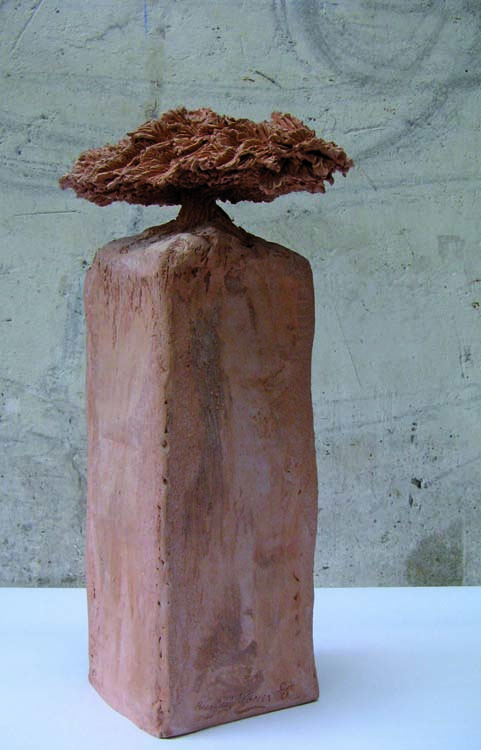
Gottfried SALZMANN
Gottfried Salzmann very often watched trees before focusing on the urban forest and its reflections. For him, they are pure objects of paint. Among the four artists in this exhibition, G. Salzmann is probably the furthest from the symbolism of the tree, and from the life force that emanates from it. His encounter with the trees is above all visual and resides entirely in the immanence of the gaze. Within this motif as within the others, he seeks the unusual point of view that could shake up and renew our gaze on the world. The pace of the trunks, the game of shadow and light, the colour variations within the foliage, the stealth glow of a blue or of a wet green are the silent words of a dialogue with infinite pattern. Gottfried Salzmann has heretofore been a painter recognized world-wide for the virtuosity of his watercolours. We have chosen to present a more secret and rarely shown portion of this unmatched work.
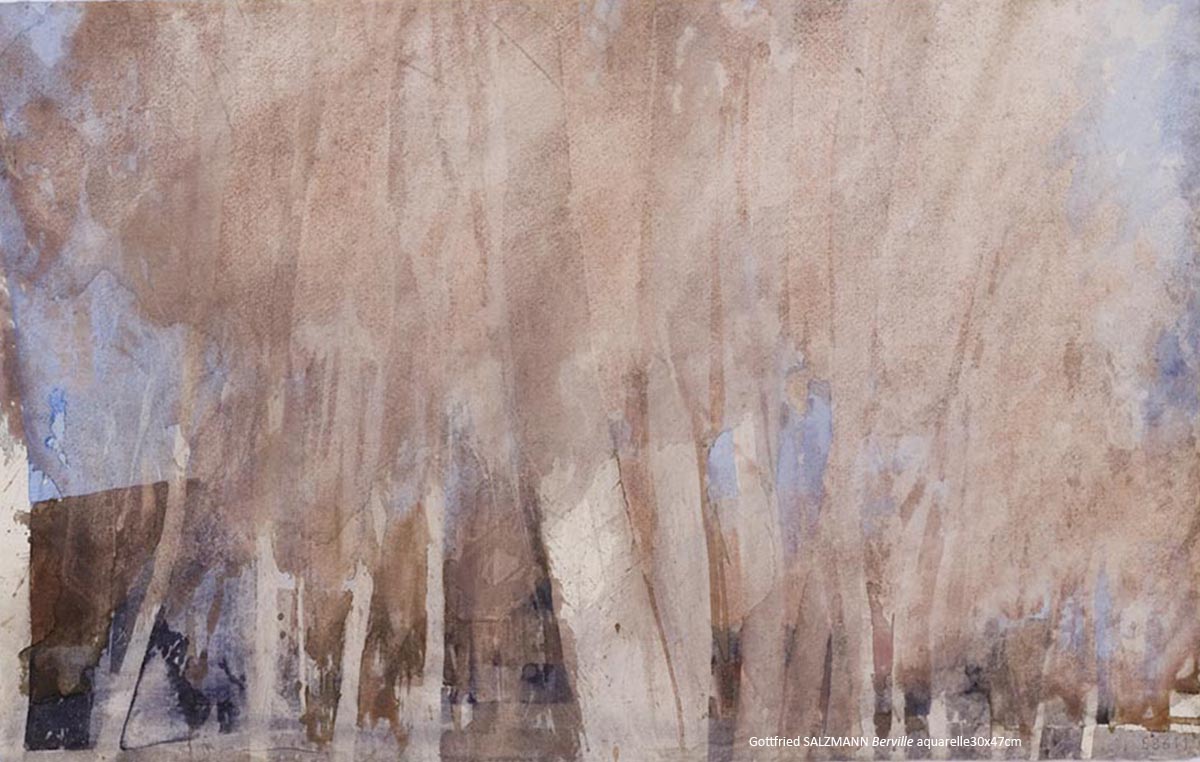
Biographies
Mario PRASSINOS
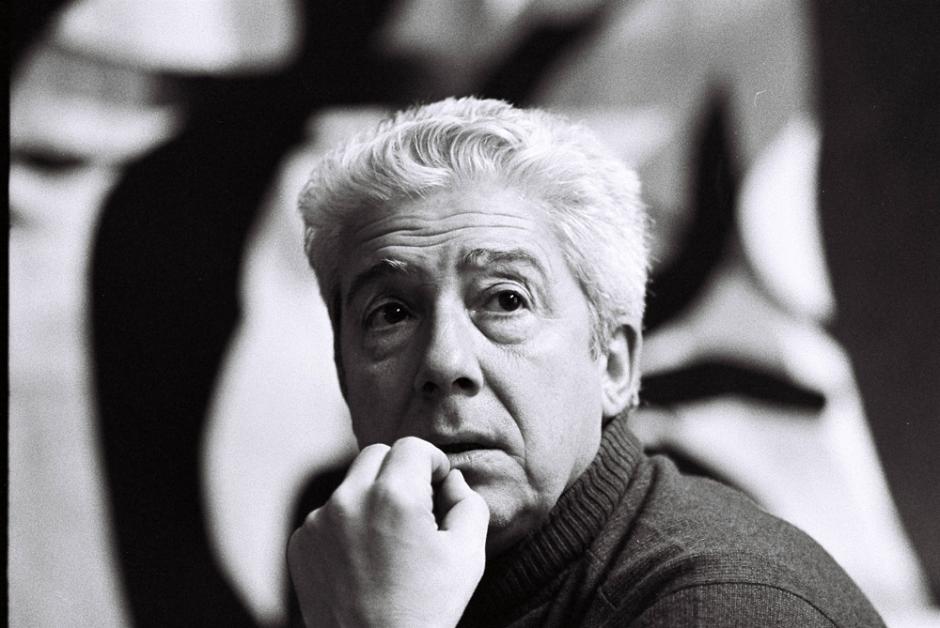 Born Greek in Istanbul in 1916, engaged as a volunteer during the second world war, wounded, he received the Military Cross; naturalized French in 1949, Prassinos has lived in France since 1922. He settled in Eygalières (Provence) in 1951.
Born Greek in Istanbul in 1916, engaged as a volunteer during the second world war, wounded, he received the Military Cross; naturalized French in 1949, Prassinos has lived in France since 1922. He settled in Eygalières (Provence) in 1951.
First encounters with Man Ray and surrealism and first solo exhibition in 1938 with a preface by R. Char. Dating and literary friendships with R. Queneau, A. Camus, Jean-Paul Sartre, for whom he illustrated «Le Mur» Jean Lescure, G. Bachelard Michel Gallimard (NRF collaboration since 1942) ...
1947 meets Jean Vilar and made his first costumes and many sets for the Festival d'Avignon and the «TNP», with Jean Vilar until 1964. Meet Myriam Prévot future director of the Galerie de France, where he exhibited regularly thereafter.
Since 1951, creates numerous monumental tapestries woven in Aubusson (Goubely workshop) and in Les Gobelins. They were presented to the La Demeure Gallery in Paris and won the Grand Prize of Milan (1957) and Brussels (1959).
In 1958 after a cruise with Albert Camus and Michel Gallimard, he made a long stay in the island of Spetses, Greece, which was the source of a renewal of his painting. Max Pol Fouchet devotes to him a television movie. New themes emerge: portraits of Bessie Smith (1962-1964) or of his grandfather Prétextat (1963-1970), new drawings from the Alpilles (1952-1977), The shrouds (les Suaires) (1974-1975), Turkish Landscapes (1969-1981) exhibited at the Grand Palais in Paris in 1980 and Trees (1980-1985).
1985: creation of eleven paintings of the Calvary for the Chapel Notre-Dame-de-Pitié in Saint Remy de Provence and donated 108 major works to the French State (CF www.marioprassinos.com). Mario Prassinos died in Avignon on October 23.
2005: Monograph Mario Prassinos, preface by François Nourissier Catherine Prassinos (expert of the Union Francaise des Experts (UFE) and Thierry Rye (ed.), Actes Sud, 342 p.
Isabelle VIALLE
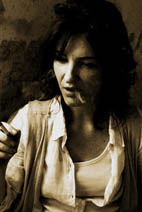 Born in Paris in 1970, graduated in Plastic Arts in Rennes II University, Isabelle VIALLE devoted herself entirely to painting. after an animation training and a professional transition in graphic arts, She spends 3 years residency at the center of contemporary art «Gingko» in Troyes.
Born in Paris in 1970, graduated in Plastic Arts in Rennes II University, Isabelle VIALLE devoted herself entirely to painting. after an animation training and a professional transition in graphic arts, She spends 3 years residency at the center of contemporary art «Gingko» in Troyes.
2008 She remains 5 years in Roubaix in the artist studios setlled in a former factory Chez Rita.
Currently lives and works in Thessaloniki in Greece, where she exhibited recently at the French Institute of Thessaloniki and the Museum of Visual Arts of Heraklion.
Her works are shown permanently in the Galerie ART aujourd’hui, exhibitions: Eloge du petit format (December 2013 - February 2014) - La part de l’ombre (18 February - March 28 2015).
Anne-Andrée CARRON
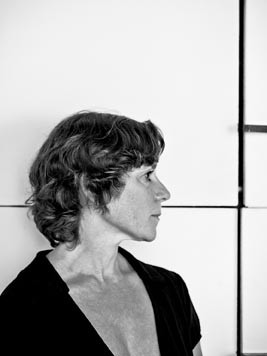 Born September 25, 1959 in Le Havre. She lives and works in Paris.
Born September 25, 1959 in Le Havre. She lives and works in Paris.
At the Ecole Nationale Superieure des Beaux-Arts in Paris, she studied at the workshop Georges Jeanclos.
After graduating in 1984, she received a scholarship to study at the experimental contemporary research of the Manufacture Nationale de Sèvres workshop.
Her sculptures have been exhibited in many galleries including the Gallery of Fine Arts and Varnier Gallery (Paris), the Centre Georges Pompidou (Terres), the Ingres Museum in Montauban (Les campagnes de l’an I).
Her creation was showcased and highlighted in Chefs d’arbres, book from the french architect Paul Chemetov (Ed. Tarabuste 2011).
Gottfried SALZMANN
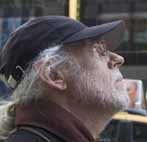 Austrian painter, born February 26, 1943 in Saalfelden, near Salzburg, Austria. He lives and works in France since 1965. Salzmann studied from 1963 to 1965 at the School of Fine Arts in Vienna and then from 1965 to 1968, the Beaux-Arts in Paris. He paints in watercolor and is also a draftsman, printmaker and photographer. Numerous solo exhibitions in Europe, USA, Philippines, Japan.
Austrian painter, born February 26, 1943 in Saalfelden, near Salzburg, Austria. He lives and works in France since 1965. Salzmann studied from 1963 to 1965 at the School of Fine Arts in Vienna and then from 1965 to 1968, the Beaux-Arts in Paris. He paints in watercolor and is also a draftsman, printmaker and photographer. Numerous solo exhibitions in Europe, USA, Philippines, Japan.
Works in public collections: the Albertina Museum in Vienna - Museum of Modern Art Salzburg Rupertinium - Museum Carolino Augusteum Salzburg - Oberösterreichisches Landesmuseum Linz - Essl Collection Klosterneuburg, Vienna - Museum of Modern Art of the City of Paris - National Library of France - Museum of Seoul - Jenisch Museum of the City of Vevey - Liechtenstein Art Museum - Metropolitan Museum of Manila.
G. Salzmann's works are permanently presented Galerie ART aujourd’hui since 2013.